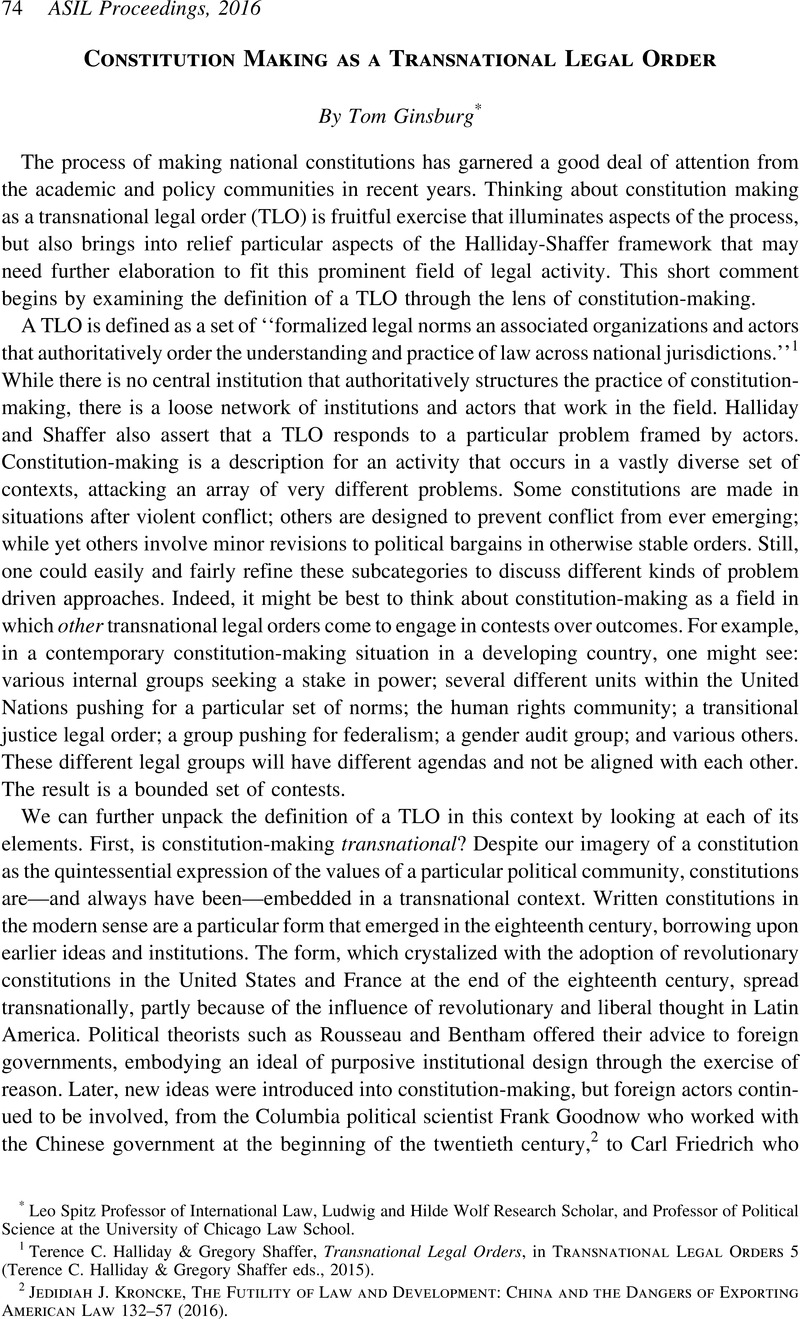No CrossRef data available.
Published online by Cambridge University Press: 18 May 2017

1 Terence C. Halliday & Gregory Shaffer, Transnational Legal Orders, in Transnational Legal Orders 5 (Terence C. Halliday & Gregory Shaffer eds., 2015).
2 Jedidiah J. Kroncke, The Futility of Law and Development: China and the Dangers of Exporting American Law 132–57 (2016).
3 Edmund Spevack, Allied Control and German Freedom: American Political and Ideological Influences on the Framing of the West German Basic Law (Grundgesetz) (2001).
4 Ghai, Yash Pal, A Journey Around Constitutions: Reflections on Contemporary Constitutions, 122 S. Afr. L. J. 804 (2005)Google Scholar.
5 de Visser, Maartje, A Critical Assessment of the Role of the Venice Commission in Processes of Domestic Constitutional Reform, 63 Am. J. Comp. L. 1 (2015)CrossRefGoogle Scholar.
6 Tushnet, Mark, Some Skepticism About Normative Constitutional Advice, 49 Wm. and Mary L. Rev. 1473 (2008)Google Scholar.
7 Slaughter, Anne-Marie, A Global Community of Courts, 44 Harv. Int'l L.J. 191 (2003)Google Scholar.
8 Halliday & Shaffer, supra note 1, at 11–12.
9 Vivien Hart, Democratic Constitution Making, U.S. Inst. Peace (2003), available at https://www.usip.org/sites/default/files/sr107.pdf.